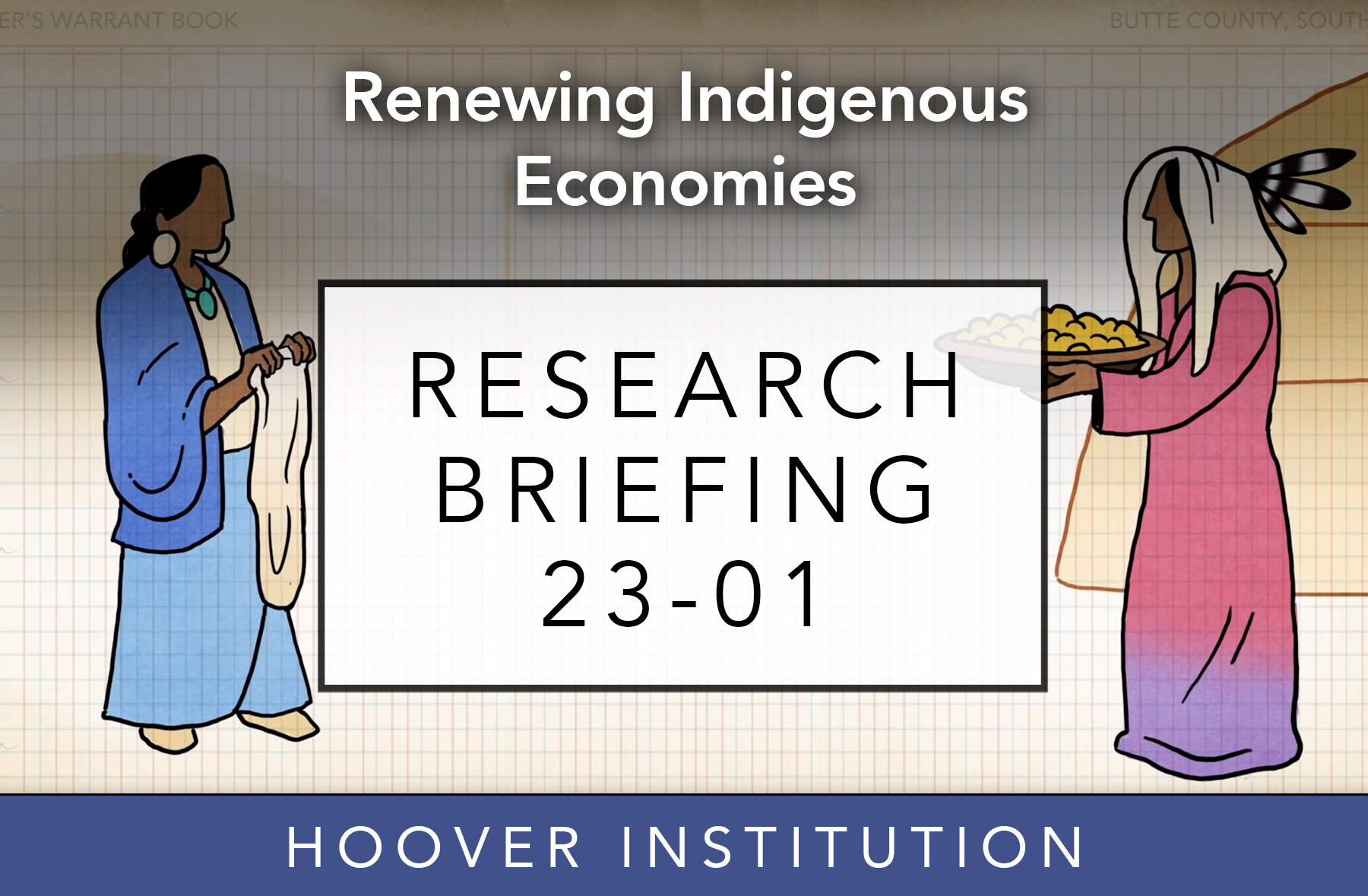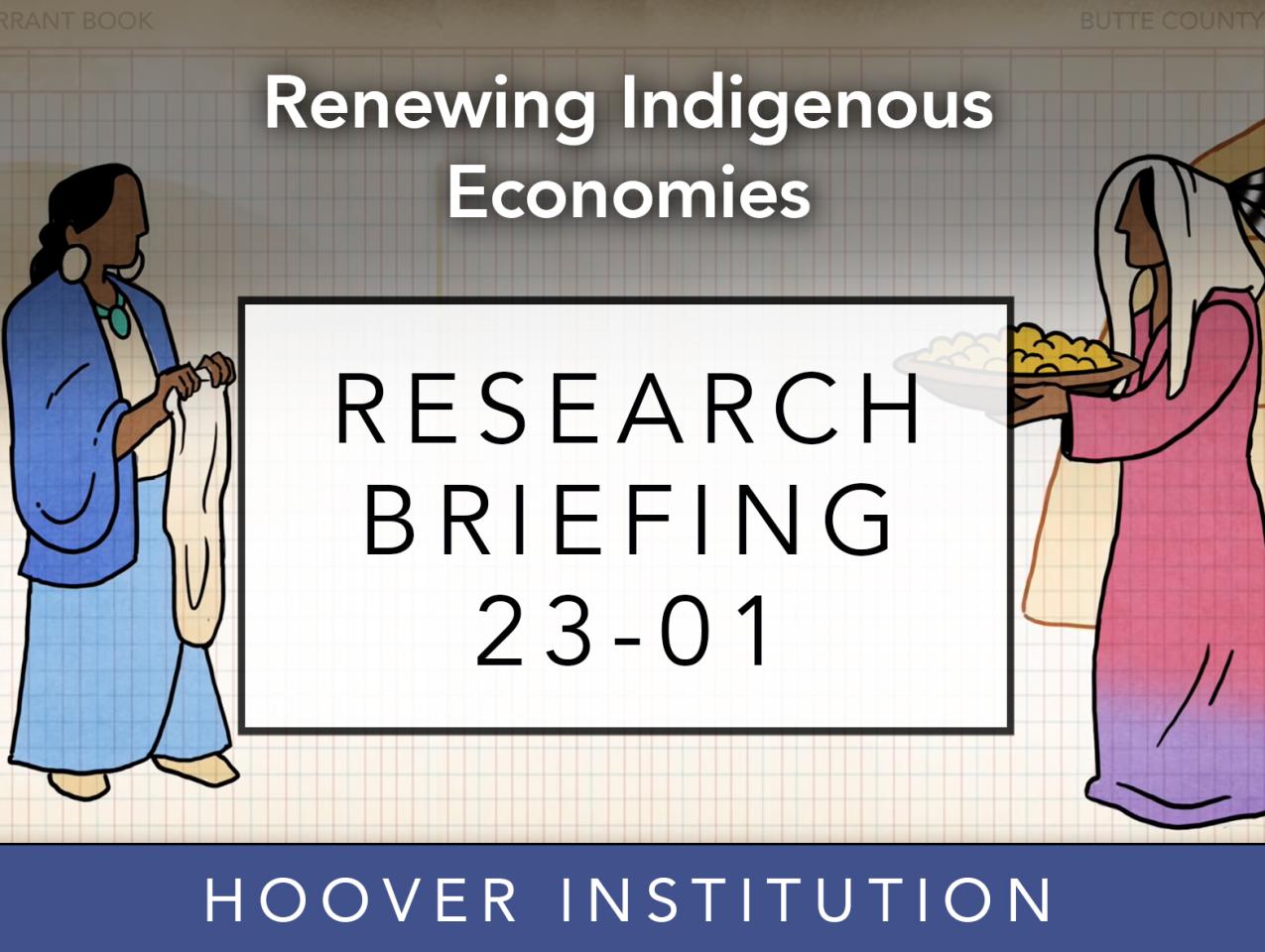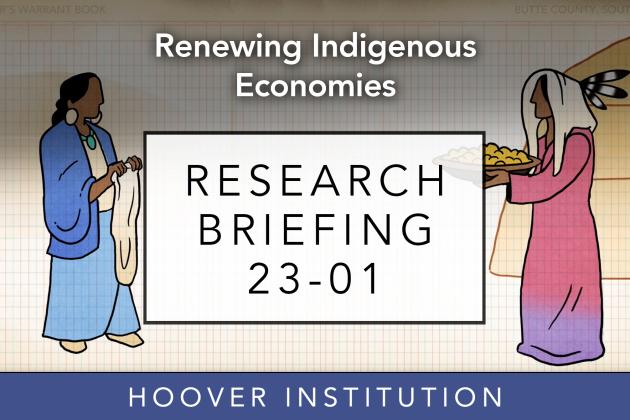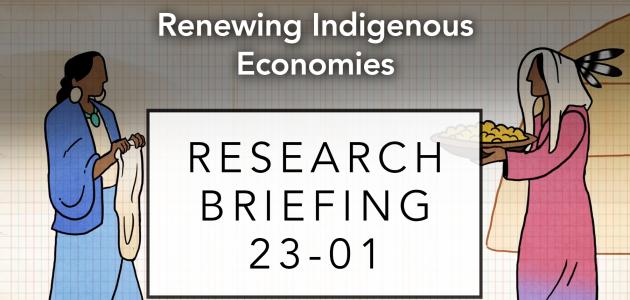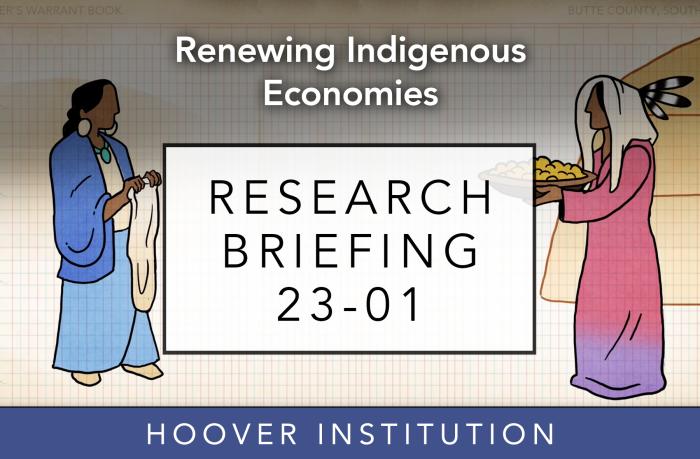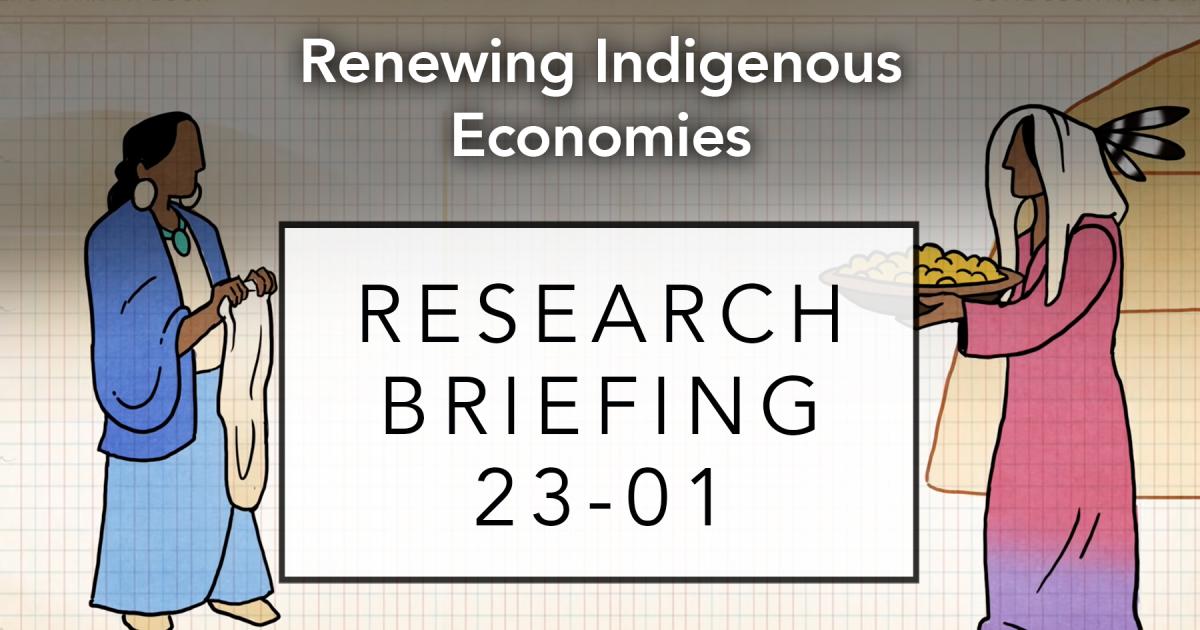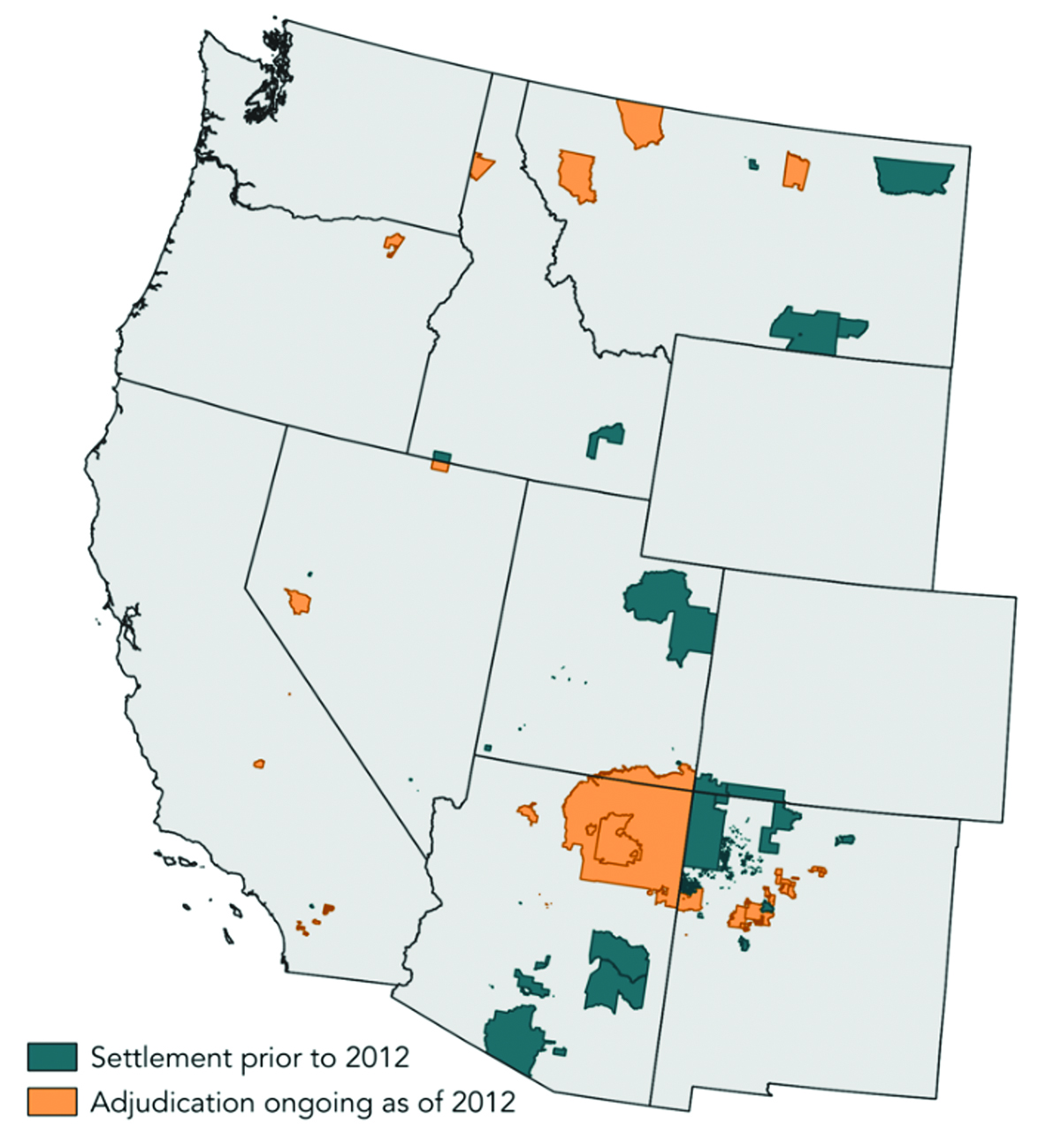
Western tribes use only a fraction of water allocated in settlement agreements because restrictions on the use of reservation trust land and other constraints deprive them of benefiting from water valued at up to $1.8 billion annually.
Based on Leslie Sanchez, Bryan Leonard, and Eric Edwards, “Paper Water, Wet Water, and the Recognition of Indigenous Property Rights,” Journal of the Association of Environmental and Resource Economics (forthcoming).
LESSONS FOR POLICY
- Winning formal legal rights to natural resources is a necessary but insufficient condition for Indigenous people to benefit from their natural resources.
- Removing institutional barriers and restrictions on tribal resource use and infrastructure development will reduce structural differences that inhibit tribes from benefiting from their resources in the same way as off-reservation resource users.
- Reducing barriers to off-reservation water marketing may enable tribes to generate and reinvest water-leasing revenue into on-reservation activities that meet their own water-use goals and priorities.
Federal Barriers Limit Nati... by Hoover Institution
The Research Problem
A wave of recent court rulings and legal settlements is recognizing Indigenous property rights to natural resources ignored during colonization. Better-defined and secure property rights should help remedy prior takings by enabling Indigenous right holders to fully capture the value of their natural resources. More broadly, clearer ownership should promote long-term investments in resource use and reduce environmental degradation from overuse.
Whether tribes benefit from these settlements, however, depends on a myriad of other barriers, restrictions, and regulatory constraints that undermine their sovereign control of reservation resources. Empirical analysis of the long-term effects of formalizing Indigenous property rights is key to understanding if and how resource use and the associated benefits change when formal rights are restored.
What We Examined
The empirical analysis examines the long-term effects of a large-scale restoration of Native American water rights through settlement agreements in the western United States. Water rights in the West were established for white settlers in the 1800s under the prior appropriation doctrine’s “first in time, first in right” rules, without regard for preexisting uses or water needs of Native Americans living on reservations. A 1908 Supreme Court ruling (Winters v. United States), however, affirmed that reservation treaties implicitly entitled tribes to water rights sufficient to fulfill the needs of the reservation based on when it was established. Because the ruling did not quantify tribal water rights or specify water sources, those implicit rights were unenforced, leaving water for appropriation for off-reservation use.

Figure 1. The map depicts the sample of reservations. Treated parcels are on reservations that completed a water settlement by 2012. Control parcels are on reservations that initiated an adjudication but had not completed a settlement by 2012.
As the value of water has increased with population growth and more diversions, tribes have sought legal quantification of their rights, typically through negotiated settlement agreements with neighboring water users, states, and the federal government. Since the first settlement in 1978, forty-six of 226 reservations in eleven western states have quantified their water rights through settlements. To understand how the legal settlements affected water use and reservation development, we use satellite data from 1974 to 2012 to compare changes in agricultural and developed land use before and after settlement across approximately 250,000 parcels on two groups of reservations: a treatment group that settled their water rights by 2012, and a control group that had started the adjudication process but whose rights had not yet been adjudicated by 2012 (figure 1). We then use estimated changes in land use among treated parcels, relative to control parcels, to estimate how settlements changed reservation water use.
The analysis accounts for two important impediments. First, putting settlement water to use typically requires capital investment such as irrigation equipment and large-scale water infrastructure to deliver water. Accessing capital can take decades and delay the use of water on reservations lacking preexisting irrigation projects. Second, significant amounts of reservation land are not owned in fee-simple tenure but are instead held in trust by the federal government. Trust land cannot easily be collateralized for irrigation infrastructure loans, is subject to federal oversight, and is difficult to convert to higher-valued uses. Because trusteeship limits how lands can be passed to heirs, millions of acres of trust land have been fractionated into many ownership interests, some of which cannot be identified by the Bureau of Indian Affairs (BIA). We test for the effects of land tenure restrictions on postsettlement land and water use to better understand how they affect the benefits to Native Americans of water settlements.
What We Found
Gains from water settlements were limited relative to the magnitude of tribal water entitlements. Land used for agriculture increased by 7.5 to 8.7 percent, or a 4,500-to-5,250-acre increase per reservation following a settlement, while developed land use did not measurably change. As of 2012—which is the most recent year of available land use data—tribes that had secured water settlements were using an average of 24 to 44 percent of their total water entitlements on reservation and leased on average 3.5 percent to off-reservation users. The three hundred-year-old Nonintercourse Act bars tribes from leasing their water rights without an act of Congress, which some tribes have obtained. Tribes that have authorization still face high transaction costs associated with water marketing. Absent the ability to lease or use the remaining 53 to 72 percent of their water rights, tribes forgo rights valued between $938 and $1.8 billion annually, and the water is used for free by the next off-reservation owner in the priority order.
Western water is increasingly scarce and valuable, so why aren’t tribes able to capture the full value of their rights? Trust land restrictions are one reason. As a result, agricultural water use expands almost exclusively on fee-simple land, whereas developed land use does not change measurably on any land tenure class. The analysis suggests that, if all parcels were free of trust constraints, average settlement water use in 2012 would grow from 24 to 44 percent to between 37 and 61 percent of the tribes’ total entitlements. Thus, tenure constraints contribute to some, but not all, of the forgone settlement benefits. We also find that the postsettlement gains in reservation agriculture are concentrated on the seven reservations that already had irrigation projects in place. Such projects were constructed by the BIA beginning in the late 1800s and are currently poorly maintained. Given the steep barriers tribes face in accessing credit for tribally built infrastructure and delays in settlement funding for new infrastructure, tribes’ settlement water access and on-reservation use appear limited to existing infrastructure.
Further Reading
Ge, Muyang, Eric C. Edwards, and Sherzod B. Akhundjanov. “Irrigation Investment on an American Indian Reservation.” American Journal of Agricultural Economics 102, no. 4 (2020): 1083–104.
Leonard, Bryan, Dominic P. Parker, and Terry L. Anderson. “Land Quality, Land Rights, and Indigenous Poverty.” Journal of Development Economics 143 (March 2020): 102435.
Sanchez, Leslie, Eric C. Edwards, and Bryan Leonard. “The Economics of Indigenous Water Claim Settlements in the American West.” Environmental Research Letters 15, no. 9 (August 2020): 094027.







